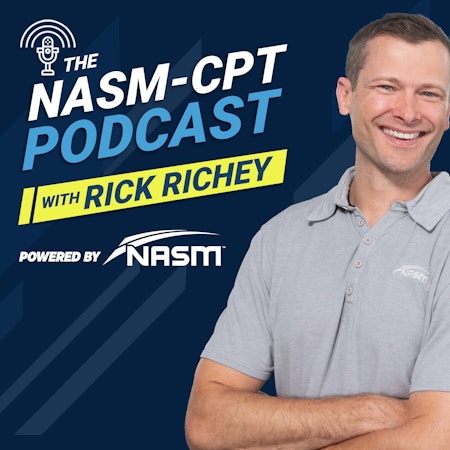
The NASM-CPT Podcast With Rick Richey
Are you studying to become a personal trainer or just started your training career? NASM Master Instructor Rick Richey takes listeners on an informative and engaging journey to help establish a solid foundation in your fitness path.
376
Functional Anatomy: Hamstrings
19 min
377
Linear vs. Undulating Periodization
17 min
378
Fitness Trackers: The What and Why
17 min
379
Functional Anatomy: Quads
18 min
380
Flexibility vs. Mobility
12 min
381
Constraints Led Approach to Running
33 min
382
Functional Anatomy: TFL
12 min
383
Components of a Workout
24 min
384
Functional Anatomy: Biceps & Brachialis
11 min
385
Glute Talk
36 min
386
Creativity in Personal Training
13 min
387
Exploring NASM Wellness Coaching
40 min
388
Real Talk About Hip Flexors
22 min
389
How to Study for the NASM-CPT Exam
63 min
390
Functional Anatomy: Joint Action Review
22 min
391
Post-COVID Exercise Research
18 min
392
Do They Really Work? Compression Sleeves
14 min
393
Rick’s Story Time: Better Business Outcomes
11 min
394
Do They Really Work? Electric Muscle Stimulation
18 min
395
Encore Presentation: Common Misconceptions Abou...
19 min
396
Write it Out: Improving Your Programming
20 min
397
Rick’s Mailbag: Muscle Balance/Muscle Functions...
19 min
398
Do They Really Work? Infrared Light
10 min
399
2022 Fitness Resolutions
21 min
400
Encore Presentation: Fitness and Arthritis
54 min